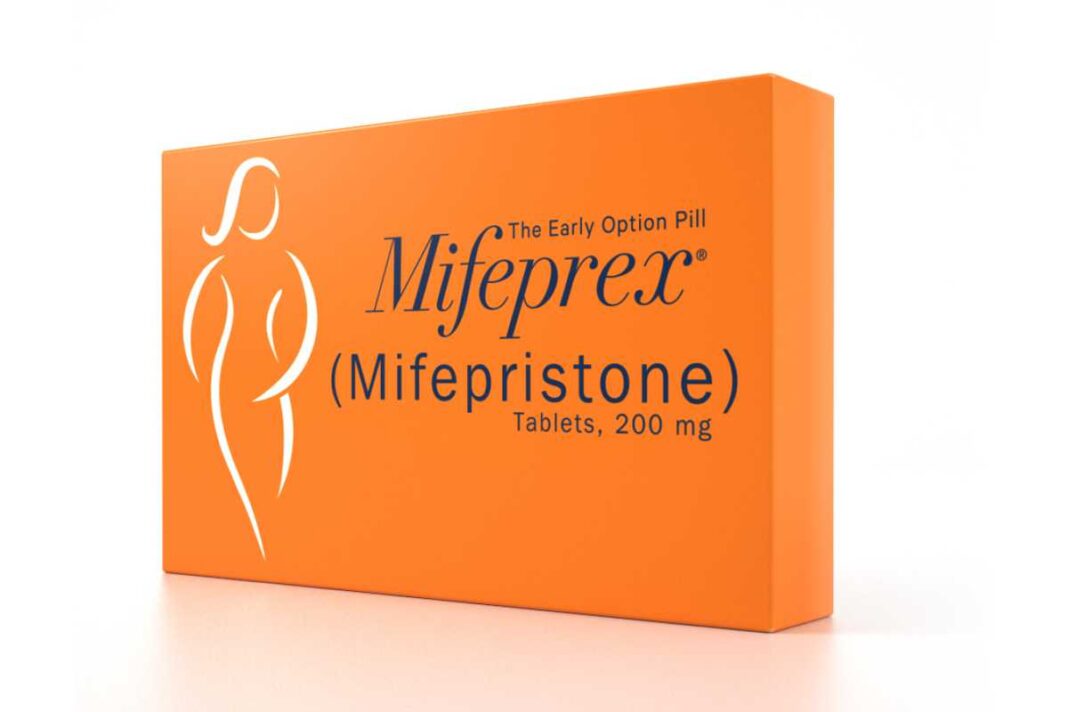SUMMARY
In September 2000, the United States Food and Drug Administration approved the use of mifepristone—an abortion pill—commonly known as RU-486 or its brand name, Mifeprex. Its entrance on the U.S. market was mired in controversy for reasons including its approval process, inadequate oversight of adverse effects as a result of its use, and the simple fact that it is an abortifacient. The drug remains no less contentious 20 years later. The annual percentage of chemical abortions grows larger every year. Pro-abortion activists, as well as state and federal lawmakers, are agitating to remove safety standards guiding the drug’s usage—or even make it available over the counter. U.S. policymakers must address the alarming impact of this dangerous drug.
KEY TAKEAWAYS
- In addition to ending the life of an unborn child, chemical abortion poses serious health risks to women.
- The use of chemical abortion in the United States has increased 120 percent in the past decade.
- Policymakers should strengthen—not weaken—the regulation of dangerous abortion pills.
In September 2003, 18-year-old Holly Patterson, who was seven weeks pregnant, walked into a Planned Parenthood clinic in California and began the chemical abortion pill regimen. One week later, she died in a local hospital after going into septic shock from a bacterial infection, Clostridium sordelli. Her father, Monty Patterson, has spent the years since her death highlighting the dangers of the abortion pill. “I’m not pro-life or pro-choice,” he said in one interview, “I’m pro-Holly.” He described the look of fear in her eyes at the hospital shortly before she died. “I don’t want anyone else to go through that.”1
Julian Guthrie, “Monty Patterson Learns About RU-486 the Hard Way,” SFGate, December 5, 2011, https://www.sfgate.com/entertainment/article/Monty-Patterson-learns-about-RU-486-the-hard-way-2345757.php (accessed March 3, 2021).
Testifying before Congress, Monty Patterson stated:
There are no quick fixes or magical pills to make an unplanned pregnancy go away. My family, friends, and community were deeply saddened and are forever marred by Holly’s preventable and tragic death. It is my vibrant memory of Holly and her premature death that have inspired me to make the public aware of the serious and lethal effects of the [abortion pill] regimen…. It is a natural instinct to protect our loved ones and speak for those who cannot speak for themselves.”2
“RU-486: Demonstrating a Low Standard for Women’s Health?” hearing before the Subcommittee on Criminal Justice, Drug Policy, and Human Resources, Committee on Government Reform, U.S. House of Representatives, May 17, 2006, https://www.congress.gov/109/chrg/CHRG-109hhrg31397/CHRG-109hhrg31397.pdf (accessed March 3, 2021).
While Holly was the first person in the United States known to have died in this manner, she would not be the last.
The Chemical Abortion Process
In the chemical abortion process a woman typically takes two pills: mifepristone and misoprostol. Mifepristone blocks the uterus from receiving a critical hormone, progesterone, which is required to sustain a pregnancy. As a result of the progesterone inhibitor, the lining of the uterus deteriorates and cannot transfer adequate nutrients to the developing unborn child, causing its death. Twenty-four to 48 hours after taking mifepristone, a woman takes the second part of the abortion pill regimen, misoprostol, which causes uterine contractions to complete the abortion process and empty the uterus. Misoprostol’s use in the abortion pill regimen is “off label,” that is, it was not created to be used in the abortion process.
Surgical abortion, in contrast, is a procedure that—in the first or second trimester—involves a health care provider using instruments such as clamps, cutterete blades, or suction catheters to extract an unborn child from the womb. For a very late-term abortion, a lethal injection kills the child in utero, and the child is delivered stillborn.3
“Abortion Procedures: What You Need to Know,” Abortion Procedures, https://www.abortionprocedures.com/ (accessed March 16, 2021).
According to current Food and Drug Administration (FDA) guidelines, mifepristone may be taken up to 70 days (10 weeks) into pregnancy, although practitioners often fail to abide by the gestational limitation.4
See, e.g., Planned Parenthood Cincinnati Region v. Taft, 459 F. Supp. 2d 626 (S.D. Oh. 2006), and Planned Parenthood, “The Abortion Pill,” https://www.plannedparenthood.org/learn/abortion/the-abortion-pill (accessed March 12, 2021). Planned Parenthood freely advertises chemical abortion up to 77 days from the first day of the last menstrual period. Common side effects of mifepristone include fever, nausea, vomiting, chills, and dizziness, along with cramping and bleeding more pronounced than a heavy menstrual period. Mifepristone is associated with other, more serious, adverse effects, including hemorrhaging, immune system inhibition, and septic shock.
Between 2000 and 2006, the FDA was aware of six deaths associated with mifepristone, as well as “nine life-threatening incidents, 232 hospitalizations, 116 blood transfusions, and 88 cases of infection.”5
U.S. House of Representatives, The FDA and RU-486: Lowering the Standard for Women’s Health, Government Reform Committee, October 2006, p. 25, https://aaplog.wildapricot.org/resources/Souder%20Comm.%20Rprt_RU-486_October%202006_converted%5b1%5d%20(1).pdf (accessed March 3, 2021). As of 2018, the FDA is aware of 24 deaths associated with mifepristone and more than 4,000 adverse events.6
Mifepristone, U.S. Post-Marketing Adverse Events Summary through 12/31/2018, United States Food and Drug Administration, https://www.fda.gov/media/112118/download (accessed March 19, 2021). Unfortunately, these reports likely do not represent the full scope of unfavorable outcomes as a result of weaknesses in the FDA’s Adverse Events Reporting System (FAERS), which are discussed later in this Backgrounder. As of December 2018, an estimated 3.7 million women had used mifepristone in the United States.7
Ibid.
In the past decade, the chemical abortion rate has increased an astounding 120 percent according to the Centers for Disease Control and Prevention (CDC). According to its 2018 abortion surveillance report, 40 percent of abortions reported were chemical in nature (38.6 percent occurred prior to nine weeks, and 1.4 percent occurred after nine weeks).8
Katherine Kortsmit et al., “Abortion Surveillance: United States, 2018,” Morbidity and Mortality Weekly Report: Surveillance Summaries, Vol. 69, No. 7 (November 27, 2020), https://www.cdc.gov/mmwr/volumes/69/ss/ss6907a1.htm (accessed March 3, 2021). The Guttmacher Institute, an abortion-focused research organization, reports that chemical abortions comprised 6 percent of U.S. abortions after mifepristone’s approval in 2000 and comprised 31 percent of abortions in 2014.9
Megan K. Donovan, “Self-Managed Medication Abortion: Expanding the Available Options for U.S. Abortion Care,” Guttmacher Policy Review, Vol. 21 (October 17, 2018), https://www.guttmacher.org/gpr/2018/10/self-managed-medication-abortion-expanding-available-options-us-abortion-care (accessed March 3, 2021).
Unfortunately, any discussion of U.S. abortion data requires a caveat. Reporting by the states to the CDC is not mandatory; not all states submit data, and the process is not streamlined. The Guttmacher Institute directly surveys abortion providers and is able to glean information from providers in states that are not represented in the CDC’s report, but, again, reporting is not mandatory. Ultimately, U.S. abortion reporting standards are not timely and streamlined, which is detrimental to public policy discussions about the issue.10
Chuck Donovan and Rebecca Gonzales, “Abortion Reporting: Toward a Better National Standard,” The Charlotte Lozier Institute America Reports Series, Issue 12 (August 2016), https://s27589.pcdn.co/wp-content/uploads/2016/08/Abortion-Reporting-Toward-a-Better-National-Standard-FINAL.pdf (accessed March 3, 2021).
Nonetheless, the data that are available conclusively demonstrate that chemical abortions make up a rapidly increasing share of abortions in the U.S.
Read Full Article on Heritage.org









